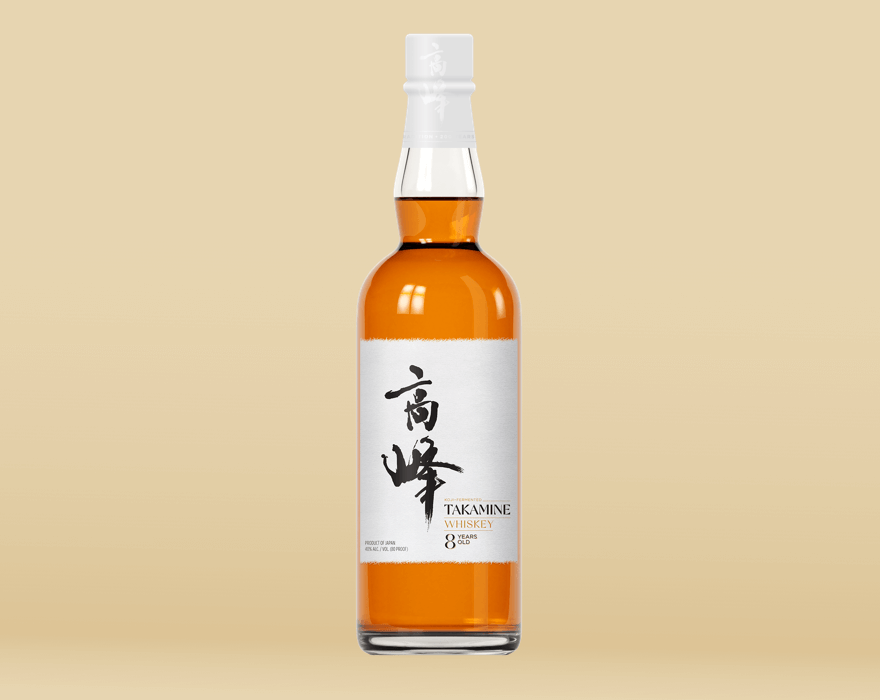Hibiki Japanese Harmony
Hibiki Japanese Harmony - from the Suntory House - is my go-to Japanese whisky when I want something complex enough to be interesting and light enough for multiple pours. It’s also the first pour I give anyone who asks to try a Japanese whisky for the first time. It’s elegant and nuanced, and shows off Japanese blending techniques for a new palate.
The Suntory story is a long one - the first native Japanese whisky making house, it was started in 1923 by businessman Shinjiro Tori and distiller Masataka Taketsuru, the latter considered the father of Japanese whisky. Though each man would go on to write their own long, storied histories, this is where the Japanese whisky industry was born.
Since Japan opened their borders to the outside world in 1868, whisky had flowed freely from trading partners - Scotch whisky was particularly loved by those who could drink it. But, for decades, there was no distillery on the islands making what one would call “whisky” - other spirits, made from rice or other native grains, had been distilled for centuries, but Japan was geographically and topographically ill-suited for large-scale barley production. Thus, whatever “whisky” the populace drank had to be imported.
When Tori and Taketsuru met, the former was a businessman and the latter was an aspiring chemist interested in producing whisky that was truly made in Japan. To make a very long story short, Taketsuru moved to Scotland, where he studied chemistry and apprenticed at Longmorn and Hazelburn Distilleries. He also met Rita, his wife, who would move back to Japan with him.
Upon returning to Japan, Taketsuru tried to apply what he had learned at the Kotobukiya plant, which would later become Suntory. Tori remained his business partner and the money man. But, early failures - such as Suntory White - strained their relationship, and the two cut ties in 1934. Taketsuru moved north to Hokkaido, where he founded what would become Nikka, while Tori retained Suntory.
Even decades later, the two men rarely interacted: it’s hard not to see how the mutual isolation is still felt today, where Japanese whisky companies do not trade stocks like their Scottish inspirations. If a Japanese whisky company wants to create a blend, each component is created in-house (or imported - I’ll touch on that elsewhere), meaning a single Japanese distillery will house multiple different still types, warehouses, and equipment.
I’ll go into more about each company’s (and each man’s) legacy and modern-day situation, but it’s important to know these basic facts: Japanese whisky is, at its core, Scottish distilling methods integrated to Japanese palates and sensibilities. I’ve rarely had a Japanese whisky that isn’t balanced, regardless of any other sensory experience. The same concepts you see in Japanese art, foot, culture, and religion are present in their whisky, and I for one greatly enjoy Japanese whiskies for that reason. Drinking them feels like you are in Japan.
Hibiki Japanese Harmony: Specs
Classification: Blended Japanese Whisky
Origin: Various Suntory Distilleries
Mashbill: Varied
Proof: 86 (43% ABV)
Age: NAS
Location: Japan
Hibiki Japanese Harmony Price: $90
Hibiki Japanese Harmony Review: Tasting Notes
Eye: Green tea. Thin rims and syrupy legs.
Nose: Floral - oaked honey with an herbal sweetness. Green grapes lead the fruits, with hay bales and a dry oak underneath.
Palate: Delicately coating - sherry sweetness with more oaked honey. Herbs become slightly less sweet and more balanced. Each sip reveals a different nuance. Mouthfeel is silky and, while light, coats my entire palate.
Finish: Medium-length, leaves beautiful sherry-type sweetness with drying oak.
Overall: Still my favorite “basic” Japanese blend, even for a blend that’ll run you around $90-$100. Suntory’s blenders pull from all of their sites to make this, and the delicacy with which they approach their craft is evident. When someone asks for an introduction to Japanese whisky, this is the pour I always start with. Others will be smokier, fuller, sweeter, dryer, any number of things, but I don’t think another blend does as great a job at simply showcasing the art of Japanese blending.
Final Rating: 7.7
10 | Insurpassable | Nothing Else Comes Close (Blanton’s Straight from the Barrel)
9 | Incredible | Extraordinary (GTS, Elijah Craig Barrel Proof B518 and B520)
8 | Excellent | Exceptional (12+YO MGP Bourbon, Highland Park Single Barrels)
7 | Great | Well above average (Blanton’s Original, Old Weller Antique, Booker’s)
6 | Very Good | Better than average (Four Roses Small Batch Select, Knob Creek 14+ YO Picks)
5 | Good | Good, solid, ordinary (Elijah Craig Small Batch, Buffalo Trace, Old Grand-Dad Bottled-in-Bond)
4 | Sub-par | Many things I’d rather have (A.D. Laws Four Grain, Compass Box “Oak Cross”)
3 | Bad | Flawed (Iron Smoke Bourbon, Balcones)
2 | Poor | Forced myself to drink it (Buckshee Bourbon and Rye)
1 | Disgusting | Drain pour (Virginia Distilling Co. Cider Cask)










